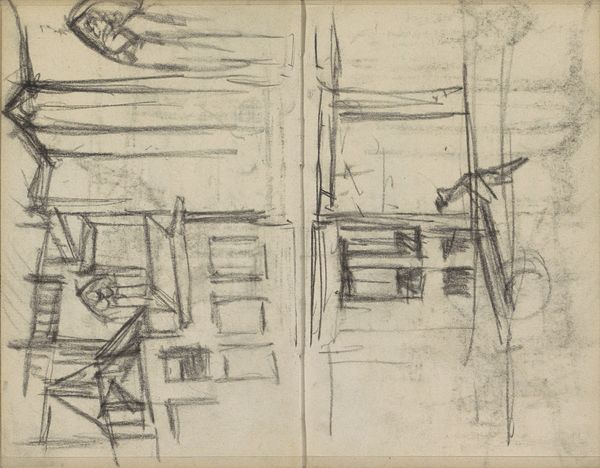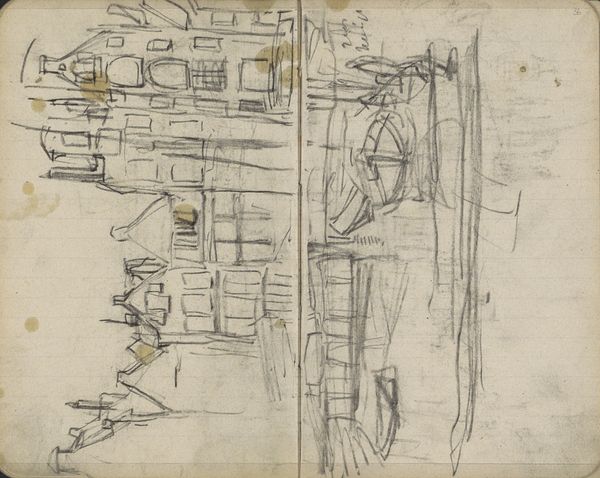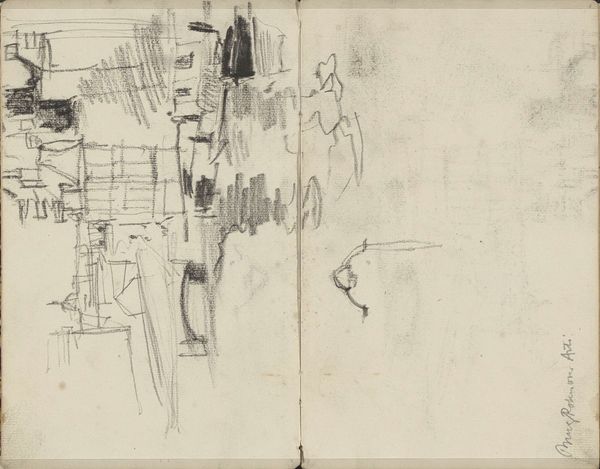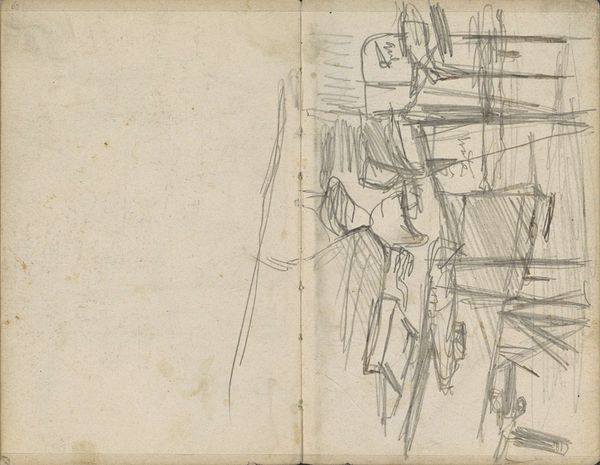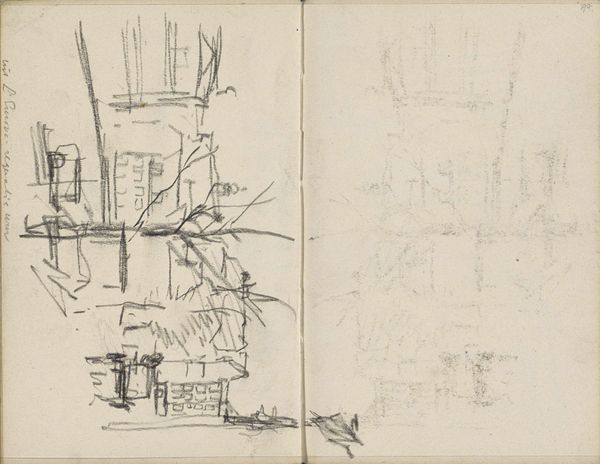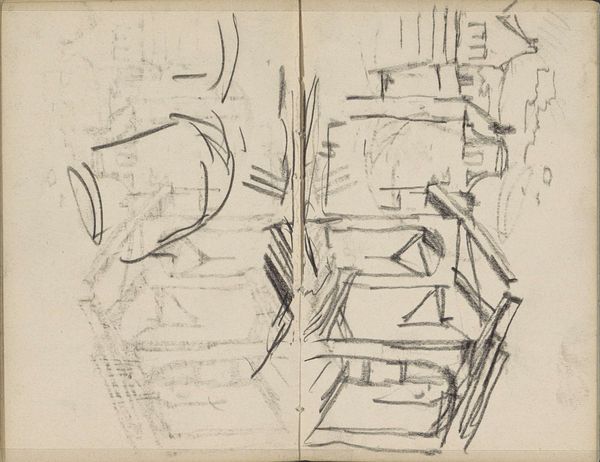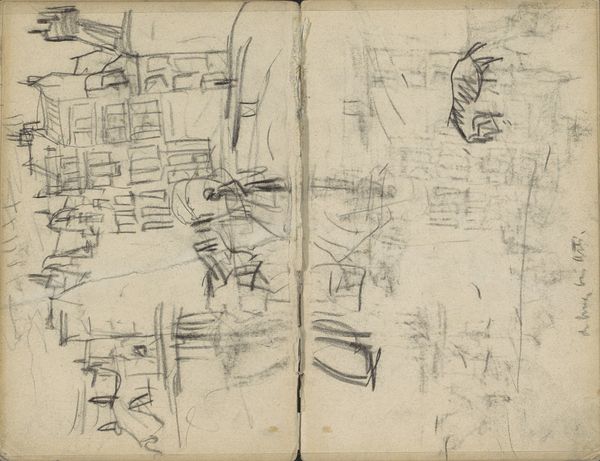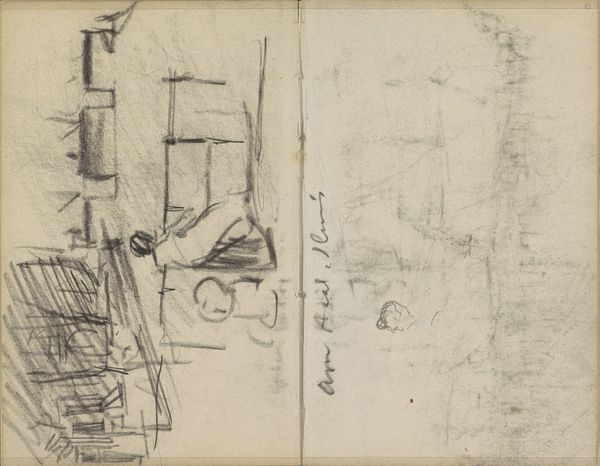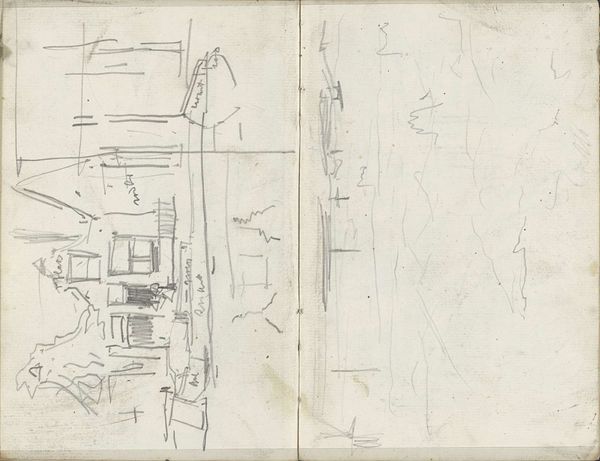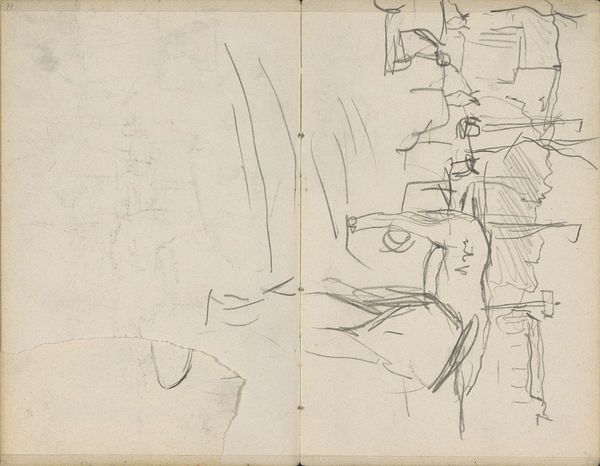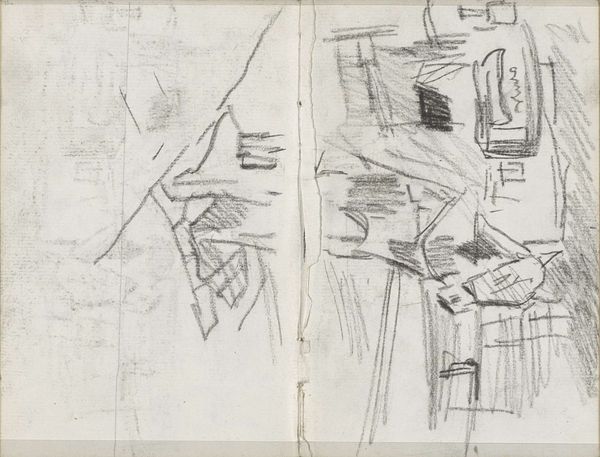
drawing, pencil
#
drawing
#
aged paper
#
toned paper
#
quirky sketch
#
impressionism
#
sketch book
#
landscape
#
personal sketchbook
#
idea generation sketch
#
sketchwork
#
pencil
#
sketchbook drawing
#
cityscape
#
storyboard and sketchbook work
#
sketchbook art
Copyright: Rijks Museum: Open Domain
Editor: Here we have "Stadsgezicht," or "Cityscape," a pencil drawing by George Hendrik Breitner, probably from the early 1880s. It's part of what appears to be a sketchbook. It feels very fleeting and raw, just capturing the essence of the place, you know? What catches your eye in this piece? Curator: Fleeting, yes! It feels like a whispered secret, doesn't it? To me, it's a beautiful little snapshot of a city awakening. It could be Amsterdam, or perhaps even Paris – Breitner certainly took cues from the Impressionists. See how the lines are almost tentative? The sketch, on toned paper, has an urgency about it. I wonder, was he trying to capture the light, or just the atmosphere of the city bustling to life? Editor: I love that idea, a city waking up. The quick lines do make it seem urgent, like he didn't want to miss a thing. Do you think these sketches were preparatory, or did Breitner consider them finished works themselves? Curator: Ah, the million-dollar question! Perhaps a bit of both? I imagine him tucked away in a café, sketching these fragments as inspiration. Some artists regard the initial sketch as an end in itself, complete within its intimacy. Breitner was incredibly attuned to everyday life, and something like this offers more immediacy than a fully worked painting. The freedom! What do you make of the different perspective of each sketchbook page? Editor: Good point! I noticed that too. It almost gives a sense of the artist's restless eye. Like, he’s trying to capture it all. I’m definitely going to pay closer attention to artists' sketchbooks from now on. I guess there's a real art in capturing a place or idea in just a few lines. Curator: Absolutely. Breitner gives us permission to revel in imperfection, in the beauty of the unsaid. Now I'm wondering, what untold stories linger on that aged paper?
Comments
No comments
Be the first to comment and join the conversation on the ultimate creative platform.

